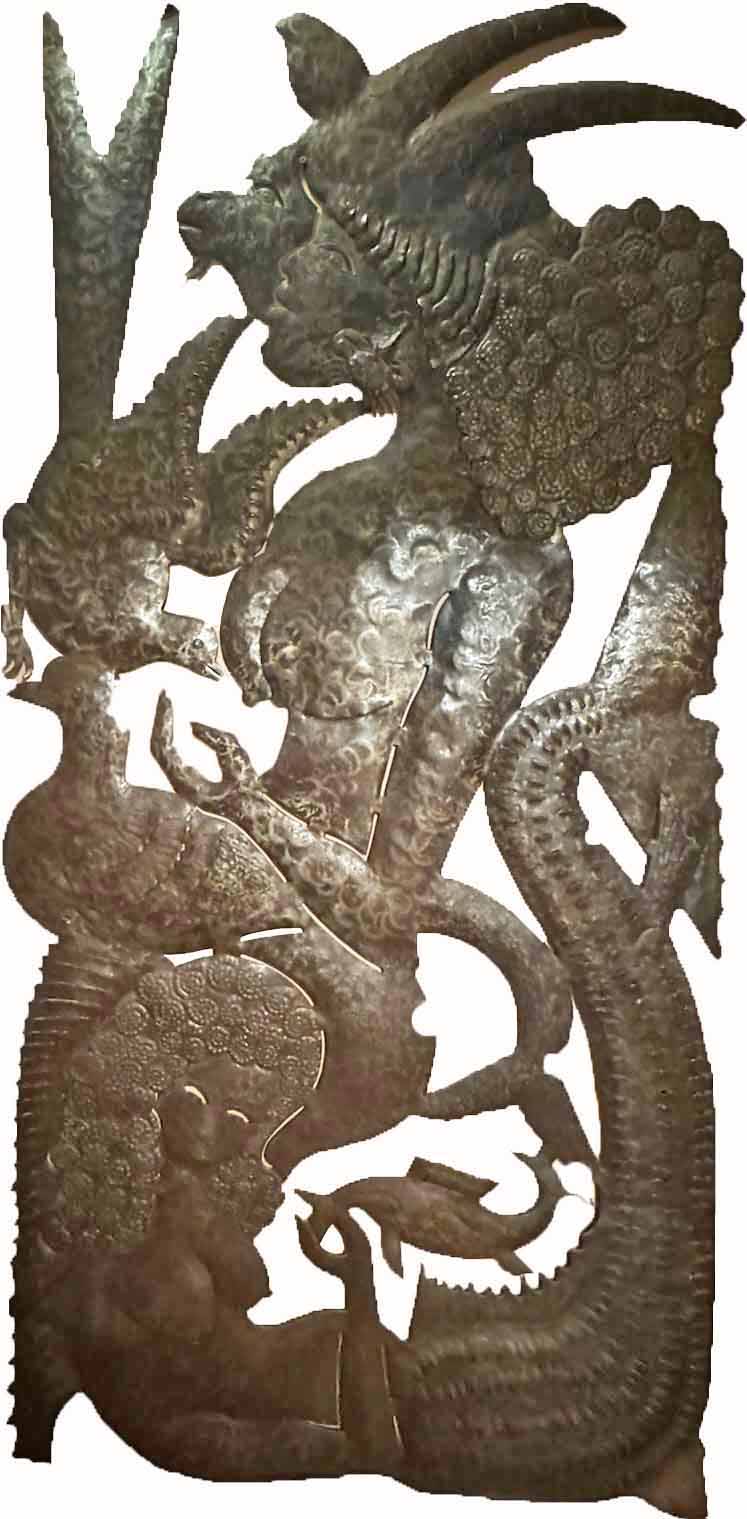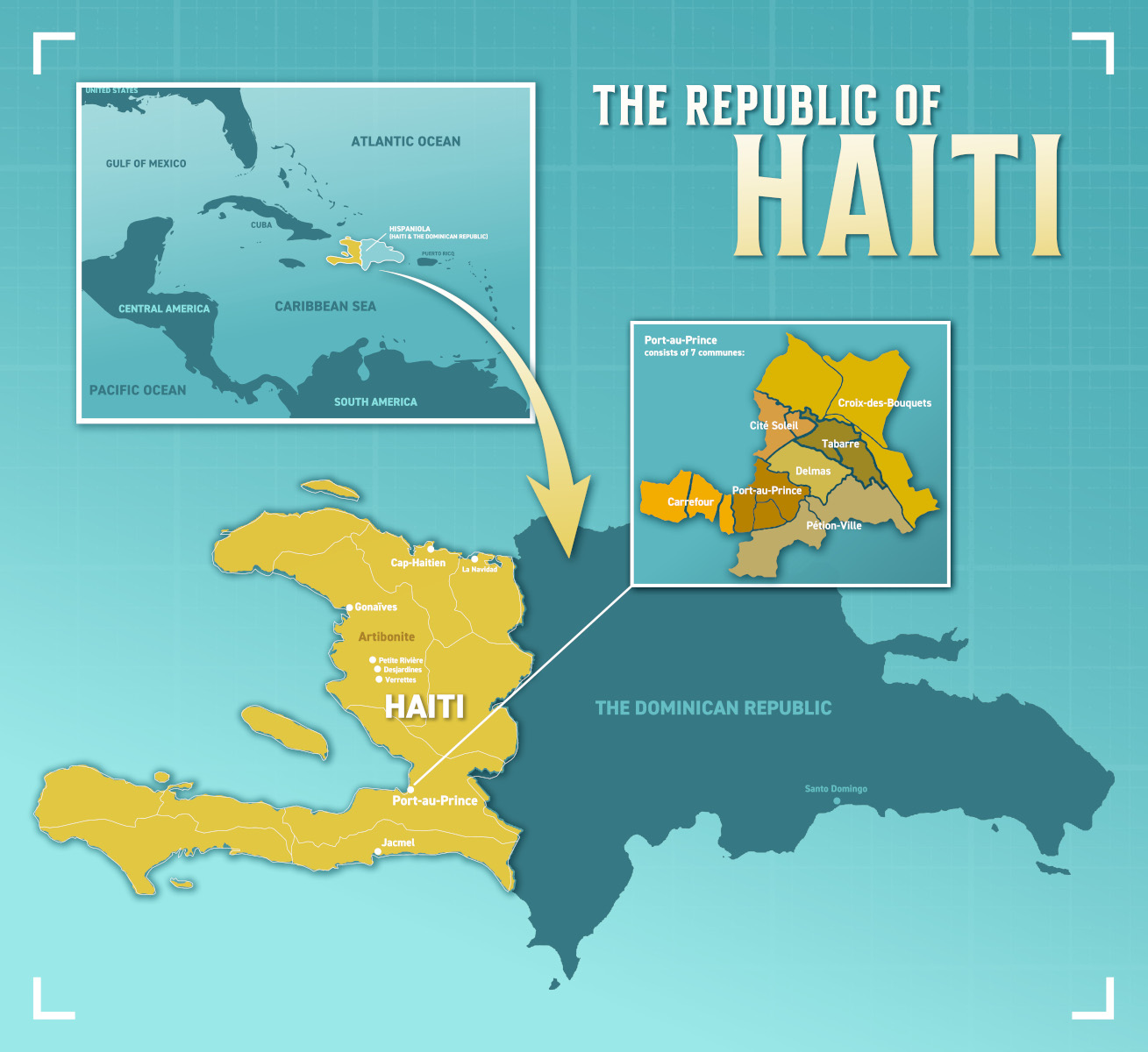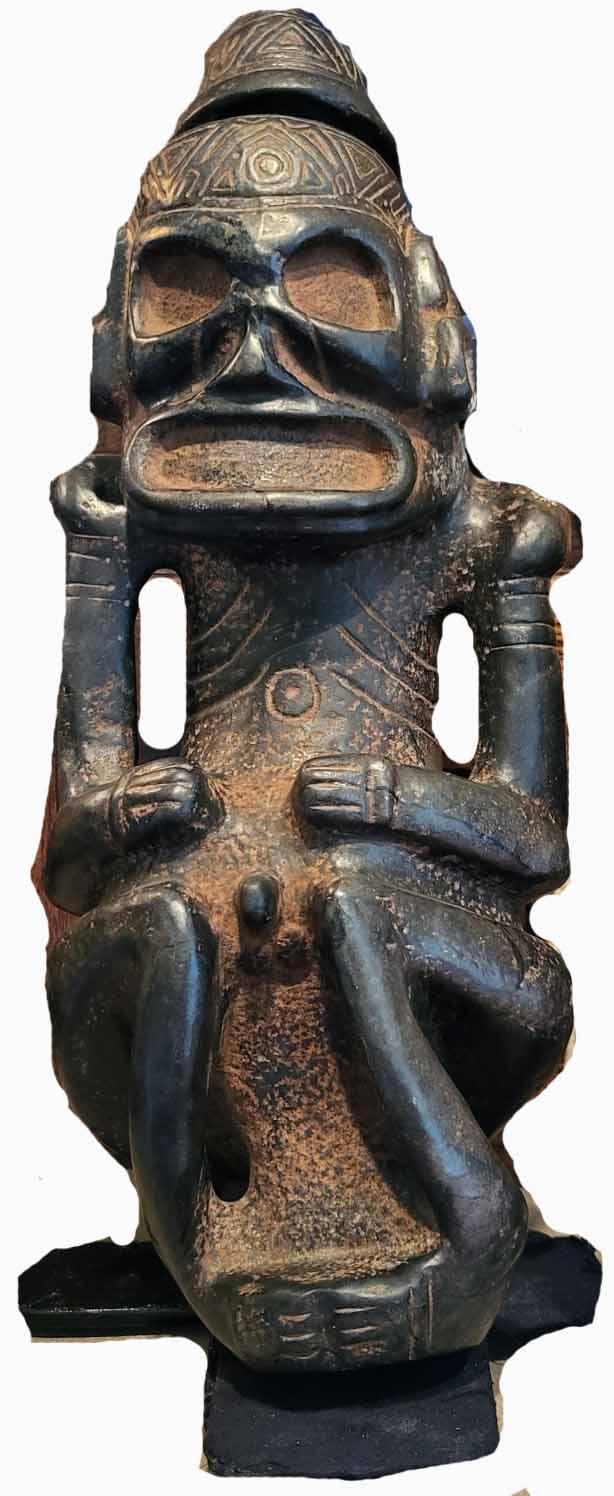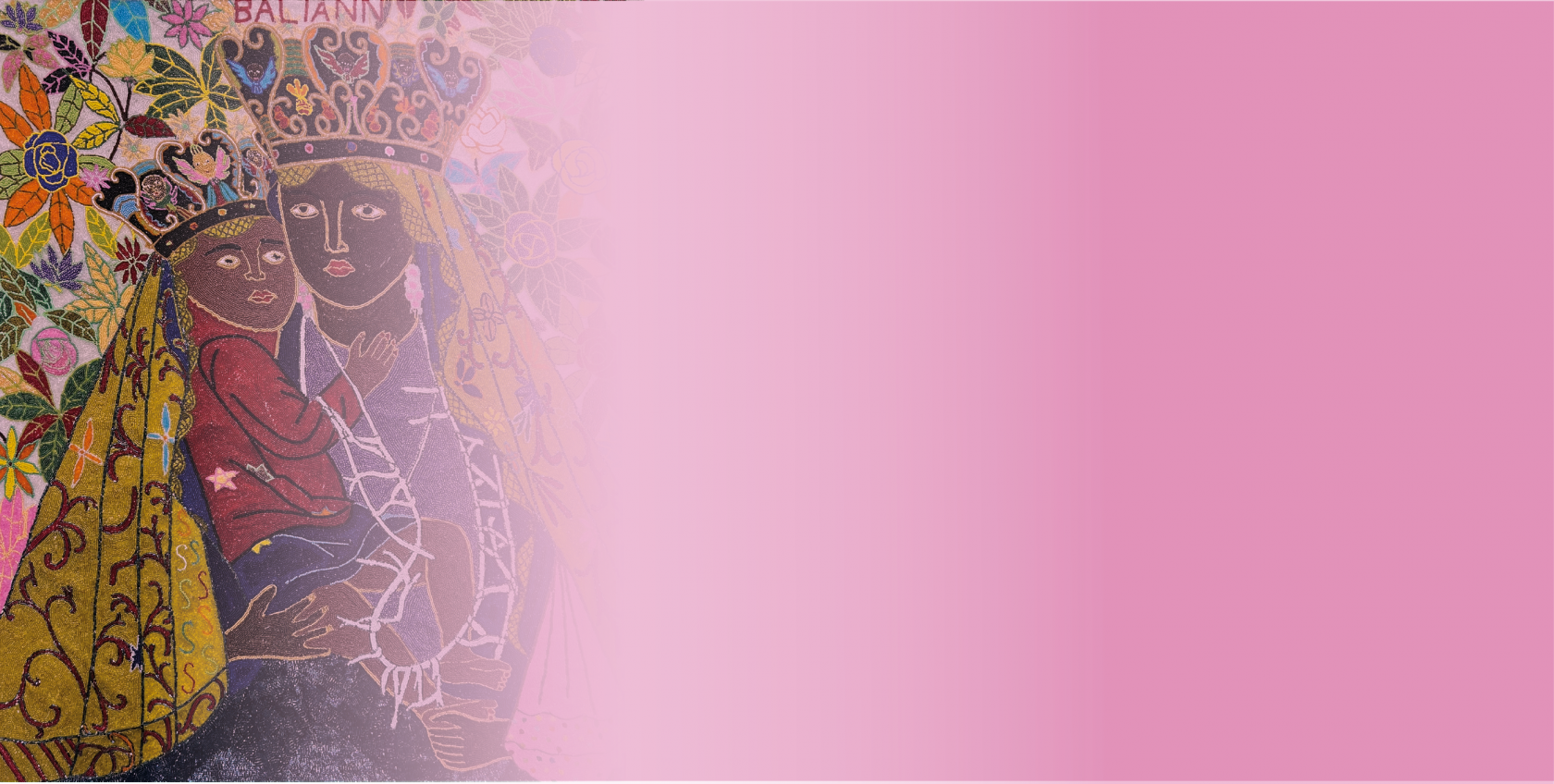
Haitian Art
Rooted in a blend of Indigenous, African, and European influences, Haitian art is characterized by its bold colors, intricate details, and spiritual themes. Despite facing economic trials, multiple natural disasters, and political instability, Haitian artists have continued to produce remarkable paintings, sculptures, and other pieces reflective of these challenges, as well as their daily lives. On display in this exhibit are works representing many of the rich and innovative artistic movements and media in Haiti—paintings from diverse regions of the country; sculptures fashioned from recycled oil drums; Vodou flags made from intricately handstitched sequin patterns and images dedicated to religious spirits; and fine examples of a more recent art form, the Atis Rezistans. The latter consists of incredibly ornate sculptures made from found and recycled materials, most notably discarded baby dolls.
Haitian art has gained international recognition for its unique styles and cultural significance, with museums and galleries around the world featuring these artists. Through their art, Haitian artists not only preserve their cultural identity but also provide a window into the complexities and beauty of Haiti's past and present.
Haiti Is A Nation Of Artists-Trailer (youtube.com)
 La Sirène La Sirène Darius Garu Croix-des-Bouquets Metal Haiti Friends Collection |
La Sirène (Lasirenn or Mami Wata) is a powerful lwa (spirit) in the Haitian Vodou pantheon. She is typically depicted as a mermaid or water spirit, embodying the dual nature of water—both life-giving and potentially dangerous. The metalwork of the renowned artistic enclave of Noailles in Croix-des-Bouquets often features representations of La Sirène.
The roots of this metalwork tradition stretch back to the 1940s, when Georges Liautaud first began experimenting with the medium. What started as simple blacksmithing soon blossomed into an art form, with Liautaud's innovative sculptures paving the way for generations of artists to follow.
 The Blessing (Benediksyon a) The Blessing (Benediksyon a)Emilcar Similien Haiti Friends Collection |
This is a portrayal of a powerful spiritual encounter between a Vodou priest and a young woman. Standing tall in elaborate white ceremonial garments, the priest displays an aura of authority and wisdom. Before him, the young woman kneels in a posture of reverence, seemingly receiving a blessing or spiritual guidance. The vivid blue background creates a mystical atmosphere, accentuated by intricate decorative elements representing important cultural and spiritual symbols.
The Republic of Haiti
The Republic of Haiti (Ayiti), a nation with a rich and complex history, shares the western third (roughly the size of Maryland) of the island of Hispaniola with the Dominican Republic. Part of the Greater Antilles, Hispaniola is the second-largest island (after Cuba) in the Caribbean Sea. After a long and arduous struggle, Haiti gained independence from French colonial rule in 1804. The leaders marked this significant historical event by changing the name of the land from Saint-Domingue (its colonial name) back to the Indigenous placename Ayiti, meaning “mountainous populated land.”
Ninety-five percent of Haiti’s 11.5 million people are of African descent, emphasizing Haiti’s strong African heritage. The rest are of mixed European and African ancestry. As with many other Caribbean and Latin American countries, the composition of Haiti’s population represents a long history of African slavery, colonialism, and migration.
Haiti recognizes two official languages: French and Haitian Creole, known as Kreyòl Ayisyen. Haitian Creole emerged between the 17th and 18th centuries through contact among different varieties of French and Niger-Congo languages. In Haiti, while French tends to be the language of law and government, Haitian Creole is the language of everyday communication, literature, and music. It is the sole language of 90-95% of the Haitian people.
 |
Pre-Colonial Art
Artistic traditions in Haiti and other Caribbean islands long preceded European colonialism. Indigenous Ayitians’ art that has survived consists mostly of objects made of stone, wood, or shell. Many of their sculptures, including those on exhibit here, depict deities or ancestral spirits, which the Indigenous called Zemi.
 Taino Mushroom-capped Anthropomorphic (Zemi) Sculpture Taino Mushroom-capped Anthropomorphic (Zemi) SculptureUnknown Artist Hispaniola, ca. 1000-1500 CE Stone Loan from collection of Joel Aaronson and Claire Keyes |
 Unknown Artist Unknown ArtistTaino Ceremonial Axe Sculpture Hispaniola or Puerto Rico ca. 1000-1500 CE Stone Loan from collection of Joel Aaronson and Claire Keyes |


